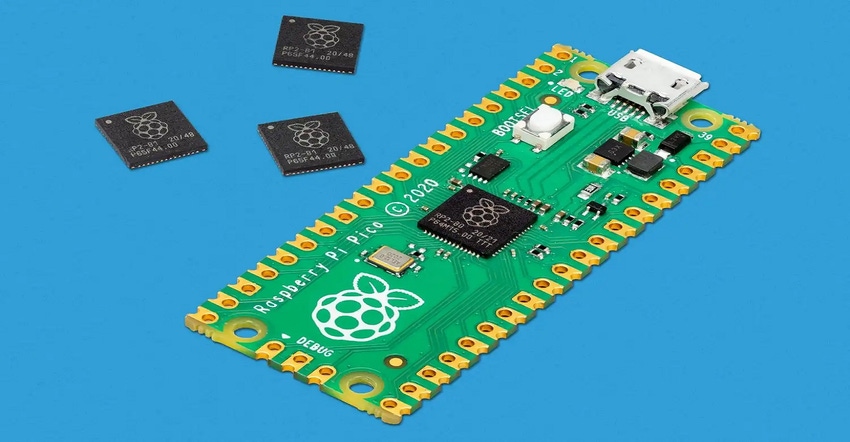Developing Machine-Learning Apps on the Raspberry Pi Pico
This free online class will give you IEEE hours while you learn to build apps on the Raspberry Pi Pico.
October 3, 2022

Starting on Monday, October 24, and running through October 28, Design News will present the free course, Developing Machine-Learning Applications on the Raspberry Pi Pico. Each class runs an hour, beginning at 2:00 Eastern. You can also earn IEEE Professional Development Hours for participating. If you are not able to attend the class schedule, the course will be available on demand.
The Raspberry Pi Pico is a versatile, low-cost development board that applies to many applications. Course instructor Jacob Beningo will explain how to get up and running with the Raspberry Pi Pico. He’ll mainly focus on how to develop machine-learning applications and deploy them to the Pico. He’ll use gesture detection as an example application. Attendees will walk away understanding machine learning, the Pico, and best practices for working with both.
Here’s a Breakdown of Developing Machine-Learning Applications on the Raspberry Pi Pico day by day:
Day 1: Getting Started with the Raspberry Pi Pico and Machine Learning
In this session, we will introduce the Raspberry Pi Pico development board, based on the low-cost, high-feature RP2040 microcontroller. We will explore the Pico board features and why the board is well suited for machine-learning applications. Attendees will walk away understanding the Pico board and the fundamentals of machine learning on microcontroller-based devices.
Day 2: Machine-Learning Tools and Process Flow
There are a wide variety of tools developers use to deploy machine-learning models to the Raspberry Pi Pico. In this session, we will explore the various tools embedded software developers might be interested in using. Attendees will also learn about the general machine-learning process flow and how it fits within the standard embedded software programming model.
Day 3: Collecting Sensor Data Using Edge Impulse
Before a developer creates a machine-learning model, they must first collect the data used by the model. This session will explore how to connect and collect sensor data using Edge Impulse. We’ll discuss how much data to collect and the various options for doing so. Attendees will walk away understanding how to prepare their data for training and eventual deployment to the Pico.
Day 4: Designing and Testing a Machine-Learning Model
With sensor data now collected, developers will now want to use their data to train and test a machine-learning model. In this session, we will use the data we gathered in the previous session to train a model. Attendees will learn how to train a model and examine the training results in order to get the desired outcomes from their model.
Day 5: Deploying Machine-Learning Models and Next Steps
In this session, we will use the model we trained in the last session and deploy it to the Raspberry Pi Pico. We’ll investigate several methods to deploy the model and test how well the model works on the Raspberry Pi Pico. Attendees will see how to deploy the model and learn about the next steps for using the Raspberry Pi Pico for machine-learning applications.

Meet your instructor:
Jacob Beningo is an embedded software consultant who currently works with clients in more than a dozen countries to dramatically transform their businesses by improving product quality, cost and time to market. He has published more than 300 articles on embedded software development techniques, has published several books, is a sought-after speaker and technical trainer and holds three degrees which include a Masters of Engineering from the University of Michigan.
Digi-Key Continuing Education Center, presented by Design News, will get you up to working speed quickly in a host of technologies you've been meaning to study, but haven't had the time – all without leaving the comfort of your lab or office. Our faculty of expert tutors has divided the interdisciplinary world of design engineering into five dimensions: microcontrollers (basic and advanced), sensors, wireless, power, and lighting.
About the Author(s)
You May Also Like



